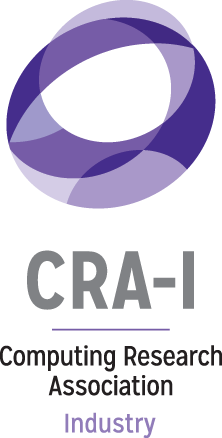How Can We Encourage More Women to Study Computer Science?
Originally Posted on The Conversation
By: MARIA KLAWE
I’ve been passionate about increasing women’s participation in computer science for more than 25 years. While the number of undergraduate women pursuing some STEM (science, technology, engineering, math) fields like biology and chemistry has steadily increased over the past couple of decades, women’s participation in computer science has actually been declining.
Indeed, within the last 20 years, the percentage of undergraduate women who received computer science degrees plummeted by almost 40 percent. According to the National Science Foundation, in 1995, 29 percent of bachelor’s degrees in computer science were awarded to women; by 2012, the most recent year for which NSF data is available, only 18 percent of computer science undergraduates were women.
The Computing Research Association (CRA) reports even lower numbers. CRA’s annual Taulbee Survey of over 100 major computer science departments in North America found that by the mid-2000s, the percentage of women graduating with computer science bachelor’s degrees averaged 14 percent.
Working to Remove Barriers
I’m a mathematician and a computer scientist. Back when I was getting my PhD in math, there were very few women in my field. Despite receiving discouragement because of my gender, I worked hard. And I excelled. I went on to take up leadership roles in many places: IBM, University of British Columbia, Princeton and now Harvey Mudd. I’ve been the first woman in nearly all these positions. I know the struggles that can hinder women when they are working in a predominantly male field. I also know firsthand how computer science and technology make for a great career, offering a good income, work-life balance and opportunities to travel. They also offer a chance to make significant contributions to the world, by working on important societal problems.
I want young women to have these opportunities. I’ve been working on this issue for decades. When I came to Harvey Mudd College in 2006, the computer science department was averaging only about 10 percent women majors. The faculty had decided to make significant changes to attract more women. They redesigned their introductory computer science courses to focus less on straight programming and more on creative problem-solving. They included topics to show the breadth of the field and the ways in which it could benefit society. In order to reduce the intimidation factor for women and other students with no prior coding experience, they split the course into two sections, black and gold (Harvey Mudd’s colors), with black for those who had prior programming experience and gold for those with no prior experience. This worked wonders to create a supportive atmosphere.
Making the Field Exciting for Women
Instead of traditional homework, which can be isolating, the faculty assigned team-based projects so students coded together. And most importantly, they made the courses fun. The intro computer science courses went from being the least-liked course in our core curriculum to being the most popular. After the courses were introduced in 2007, we saw an immediate and steady increase in the percentage of female students majoring in computer science. Within four years, we went from averaging around 10 percent women majors to averaging 40 percent. We have continued to average 40 percent since 2011.
In addition, faculty created early summer research opportunities designed for students who had completed only one or two computer science courses, and encouraged their first-year female students to participate. A number of studies have shown that research experiences for undergraduate students increase retention and confidence in STEM fields, factors that are particularly important for women and minorities. Harvey Mudd’s female students who participated in early computer science research projects indeed reported greatly increased interest in the discipline and a boost in confidence. They realized they could do the work of a computer scientist and that they enjoyed it as well. We also send large contingents of women students each year to the Grace Hopper Celebration of Women in Computing, the largest conference for women working in technology fields. At this event, students get to see role models and are excited about the many amazing technology career paths they can pursue.
Other institutions are starting to take up our approaches. For instance, the Building Recruiting and Inclusion for Diversity (BRAID) initiative that we launched with the Anita Borg Institute is working to build computer science diversity at 15 academic institutions. We are about to offer our intro computer science course as a free massive open online course (MOOC) on edX, so professors and students can access the course materials.
There’s Still Work to Be Done
However, many barriers and challenges remain. The National Science Foundation’s most recent (2012) report shows that computer science has the lowest proportion of women receiving bachelor degrees of all the STEM fields. The percentage dipped to a mere 11 percent from 2007 to 2009 and gradually returned to 14 percent by 2013 to 2014. Computer science should be a required part of secondary education, but a lot of schools don’t have computer science teachers. Most young people who go to college today have not had much exposure to computer science.
We also have to combat the cultural belief that some people are simply born with math, science or computer talent and others are simply “not good at it.” There’s lots of research that shows that persistence and hard work play a much larger role in success in any area of science and engineering than “native ability.” Another serious challenge is posed by the media portrayal of careers in technology, which builds certain stereotypes. I want people to think about how we can change our images of who we consider to be competent in technology. At the moment, the image of the computer scientist is limited to a white or Asian male.
One thing we know for sure is that you get better solutions if you have more diverse teams working on them. We need the female perspective to get the best solutions to very pressing problems.
Need for Diversity
We also need more African Americans, Latinos and Latinas, poets, football players and artists involved in creating technology. Right now there is unfilled demand for computer science grads and not just in the tech industry. I want computer science and technology to be a world that embraces everyone who has passion, ability and interest, whether they look like the dominant group or not.
Today, computer science touches all industries. Its products are embedded in our daily lives. Addressing the significant problems of the world—from climate change to health care to poverty—will involve technology. I think the world will be an incredibly exciting place and we will see amazing technological developments when we create a much more diverse tech community.
Maria Klawe is president at Harvey Mudd College. She serves on the boards of Microsoft Corporation and Broadcom Corporation, as well as the nonprofits Math for America and EdReports. Klawe is a past president of the Association of Computing Machinery in New York, past chair of the board of trustees of the Anita Borg Institute for Women and Technology in Palo Alto and a past trustee of the Institute for Pure and Applied Mathematics in Los Angeles. She has held leadership positions with the American Mathematical Society, the Computing Research Association, the Society for Industrial and Applied Mathematics and the Canadian Mathematical Society. She is a trustee for the Mathematical Sciences Research Institute in Berkeley. Until recently, she was a member of the Stanford Engineering Advisory Council and the Advisory Council for the Computer Science Teachers Association. She was elected as a fellow of the Association of Computing Machinery in 1996 and as a founding fellow of the Canadian Information Processing Society in 2006. Harvey Mudd College receives funding from many organizations, including the Ahmanson Foundation, the Annenberg Foundation, the Arnold and Mabel Beckman Foundation, the Arthur Vining Davis Foundations, Camille & Henry Dreyfus Foundation, Edison International, the Hearst Foundations, the Howard Hughes Medical Institute, Honeywell, Intel Corporation, the Fletcher Jones Foundation, the Andrew W. Mellon Foundation, the National Institute of Standards & Technology, the National Institutes of Health, the National Science Foundation, the Ralph M. Parsons Foundation, Research Corporation for Science Advancement and the John Stauffer Charitable Trust.





